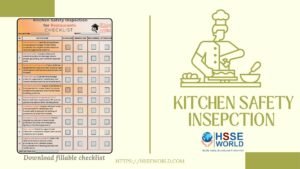Standards and Required use of PPE
5 min readHazards exist in every workplace in many different forms: sharp edges, falling objects, flying sparks, chemicals, noise and a myriad of other potentially dangerous situations. The Occupational Safety and Health Administration (OSHA) requires that employers protect their employees from workplace hazards that can cause injury.

Controlling a hazard at its source is the best way to protect employees. Depending on the hazard or workplace conditions, OSHA recommends the use of engineering or work practice controls to manage or eliminate hazards to the greatest extent possible. For example, building a barrier between the hazard and the employees is an engineering control; changing the way in which employees perform their work is a work practice control. When engineering, work practice and administrative controls are not feasible or do not provide sufficient protection, employers must provide personal protective equipment (PPE) to their employees and ensure its use.
Personal protective equipment, commonly referred to as “PPE”, is equipment worn to minimize exposure to a variety of hazards. Examples of PPE include such items as gloves, foot and eye protection, protective hearing devices (earplugs, muffs) hard hats, respirators and full body suits. This guide below will help both employers and employees do the Identify the Required Standard of PPE to be used
PERSONAL PROTECTIVE EQUIPMENT (PPE) STANDARDS & REQUIRED USE | |||
SN | PPE | MINIMUM STANDARD | MINIMUM REQUIREMENTS FOR USE |
1 | Hard Hats | ANSI Z-89 Class A,B,G, or E Type 1 or 2 or equivalent | ·Always in all production and construction areas·Exceptions are identified |
2 | Safety Glasses | ANSI Z-87Must have side shields | ·Always in all production and construction areas·Exceptions are identified |
3 | Steel Toe footwear | ANSI Z-41 | ·Always in all production and construction areas·Exceptions are identified |
4 | Face Shields | Plastic | ·During grinding, drilling, cutting, and sawing operations·Operations where chemicals hazardous to the eyes are handled·Must be worn with safety glasses or goggles |
5 | Goggles | Plastic, Flexible fitting, regular ventilation | ·Laboratory Operations·Any activities where the danger of having any particles into eye exists |
6 | Welding Helmet | Properly tinted lenses | ·Electric (arc) welding·Must be worn with safety glasses or goggles |
7 | Fall Protection | Full-body harness which meet ANSI 10.14 type 1 | ·Activities that exceed 6 feet in height above ground or work surface wherever there are unsecured sides and edges·Retractable lanyards when in a man basket, man lift, or any moving enclosure |
8 | Work Vests | USDCG type V or equivalent | ·Working near or above water or working beyond handrails or no handrails are provided on any structure or vessel· During stormy or rough weather on vessels deck·When transferring to or from any vessel·When riding outside on any boat |
9 | Body Protection | No highly flammable fabric such as nylon, rayon, or Dacron allowed | ·Long sleeve shirts required when grinding, welding, or burning·No tank tops, halter tops, muscle shirts, or short pants·Shirt must be tucked in inside trousers |
10 | Respirator Protection | See requirements for use in para 5.3.7 | ·General spray painting requires half-face negative pressure respirator with organic vapor cartridges·Painting with paint containing isocyanates requires air- supllied paint hood·Welding, cutting, or any hot work on galvanized surfaces requires half-face negative pressure respirator with HEPA (P100) cartridges·Any hot work on surfaces with lead paint requires air-supplied full or half-face respirator·Nuisance dust areas require disposable dust, fume, and vapor mask respirator |
11 | Hearing Protection | See requirements for use | ·Designated high noise areas as identified and marked with warning signs·Within engine Rooms·When noise decibel exceeds 90dba |
12 | Hand Protection | See requirements for use | ·Impervious gloves worn when working with chemicals or providing first aid·Leather gloves with gauntlets worn when welding, cutting, fitting, brazing sharp edges, or abrasive blasting·Leather hand gloves worn when handling cables or splicing of wire rope·Cotton hand gloves worn when operating valves, equipment, and handling rough objects· Must not be worn working with rotating equipment. |



